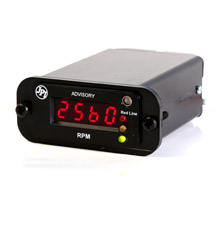 Fuel Flow Transducers: The origin, advantage and current status
Fuel Flow Transducers: The origin, advantage and current status
It was 1972 when that time leading U.S. avionics manufacturer Aerosonics began testing fuel flow transducers for use in general aviation aircraft. It was the first time someone took transducers seriously and tried to make one capable enough to withstand the vibrations of aircraft engines. It was important that it meets FAA regulations about blocked-rotor pressure drop without exceeding the 1.5 times the pressure drop of a spinning rotor. The chief advantage of a fuel flow transducer is that a blocked rotor does not affect the pressure drop in fuel-flow transducers. This imparts superior accuracy and an extraordinary repeatability for the devices and today, fuel flow transducers rule the roost when it comes to fuel flow measurement.
Fuel Flow Transducer: What does it do?
Unless the engine gets an even and steady flow of fuel, there will be a lot of hiccups and its overall performance will run downhill. In engine terminology, this is called knocking, but hiccups might occur due to a myriad other reasons too! To ensure that the flow of hydrocarbon fuels – most common being gasoline, kerosene, diesel and aviation fuel – is correct, you need to read from the fuel flow transducer.
Or, maybe there’s an excess amount flowing, resulting in a rich-burn engine. The fuel flow transducer comes handy again! It helps you to check fuel wastage.
Fuel Flow Transducer: How it works?
The fuel flow transducer works upon a vane Electronic Data Management Systems, located downstream behind the fuel filter and the Adapters and Cables. It usually stays in combination with ‘manifold air pressure’ or MAP.
The transducer produces a current-pulse signal from an opto-electronic pickup that’s fitted with a preamplifier. It has a 100 to 1 flow-range and gives out signals repeatedly and can measure fuel-flow down to 0.3 gallons/hour; however, the transducer bearing system is rated for continuous operation at the upper end of the flow range. It also conveys to the pilot the information about the health and performance of the engine and helps the pilot to keep the engine running within its operating limits to ensure maximum reliability.
Fuel Flow Transducer: Operating principles
•The liquid fuel’s rotational velocity is proportional to its flow rate. Upon entering the flow chamber, it moves along a helical flow-path before exiting vertically. It helps to vent any vapour bubble that might exist. This vapour-venting design requires the transducer to be positioned with electrical connectors pointing up.
•A neutrally-buoyant rotor spins with the liquid between V-jewel bearings and its movements are sensed when its notches interrupt an infrared light beam emitted by a LED with a phototransistor on the opposite side.
Turbulence caused by valves or sharp elbows mounted close to the transducer inlet can affect transducer K-Factor and should be minimized.
Visit Here :- https://www.jpinstruments.com/

